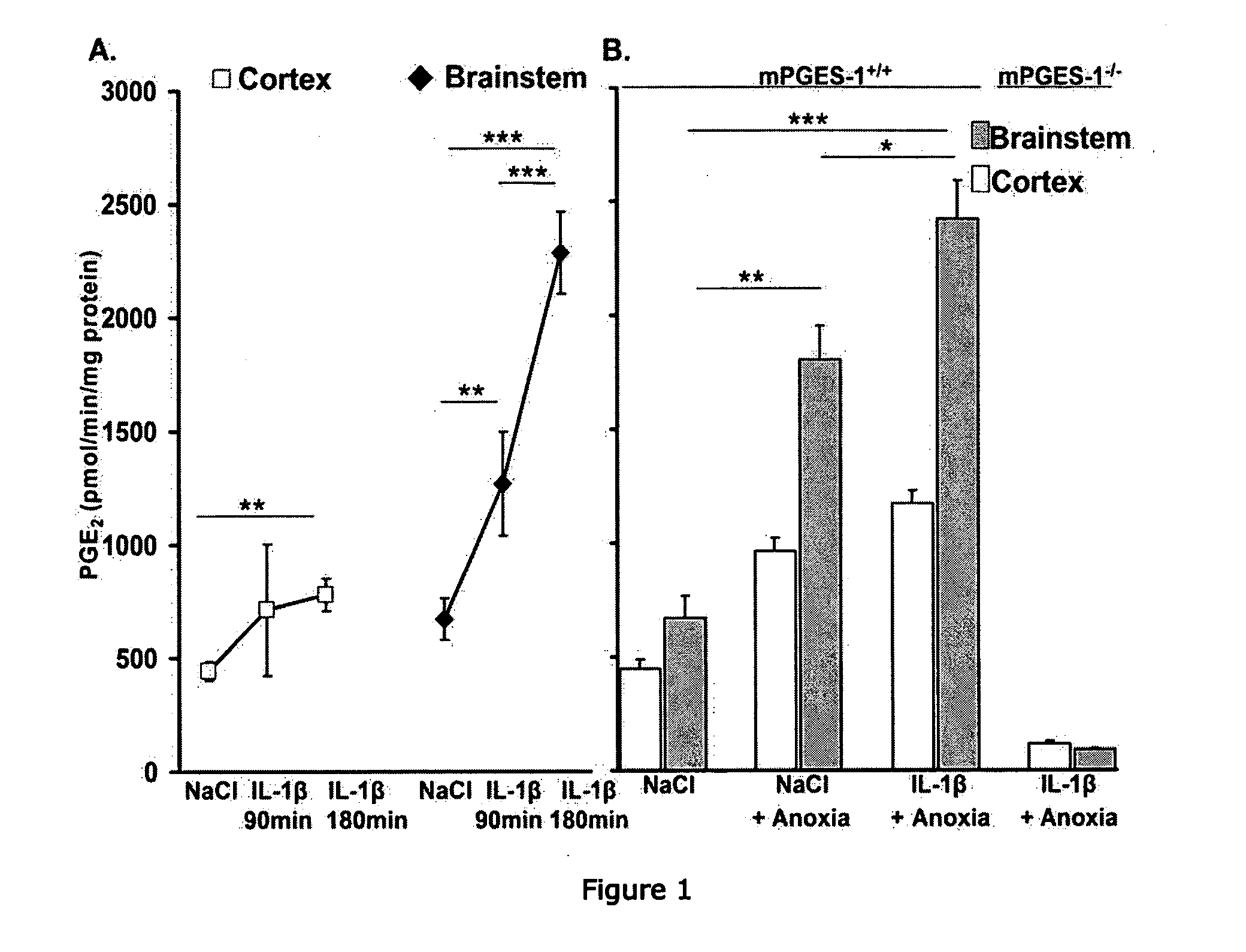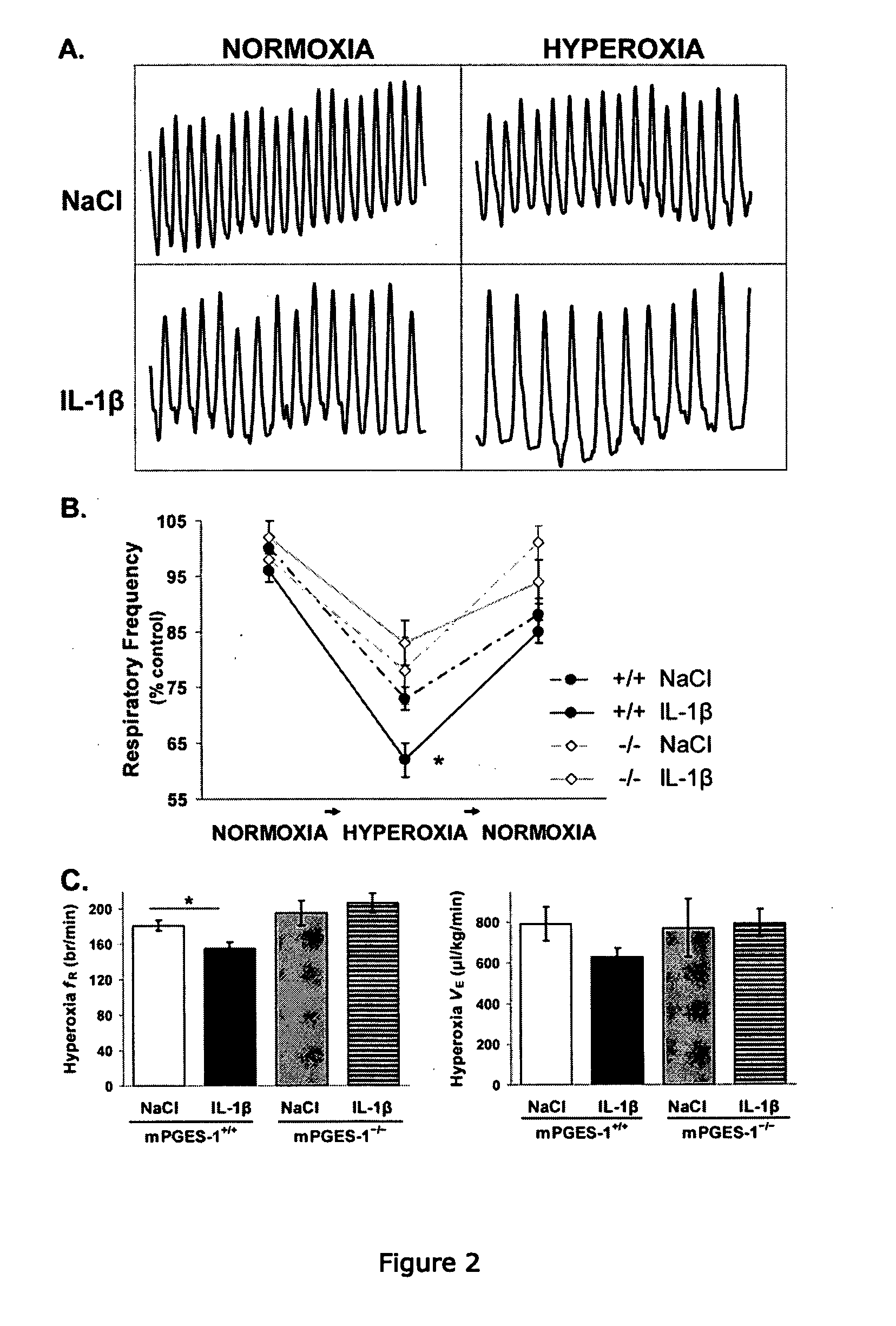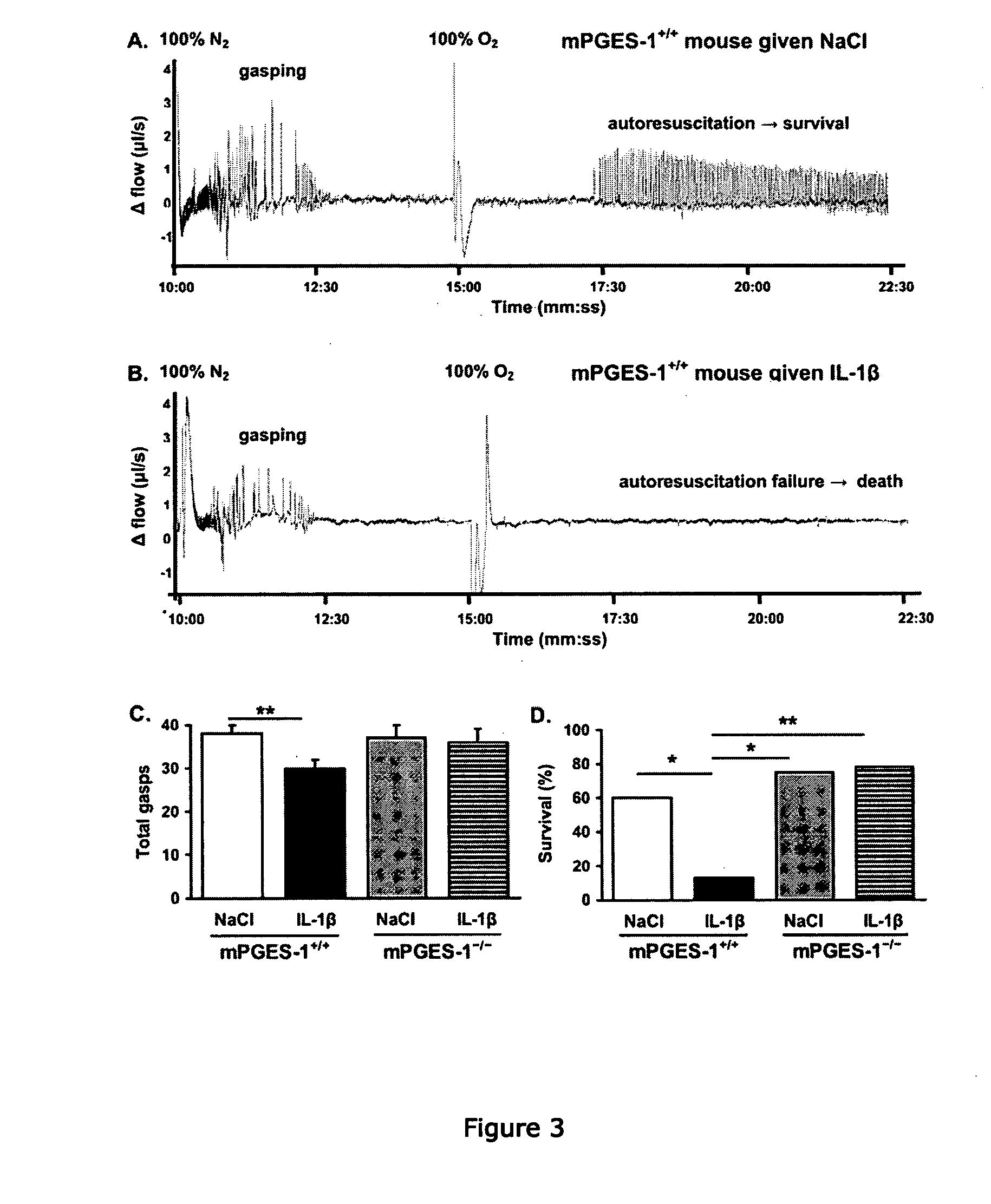Methods relating to breathing disorders
a breathing disorder and breathing disorder technology, applied in the field of breathing disorders, can solve the problems of increased apnea frequency and failure to autoresuscitate, and achieve the effects of reducing autoresuscitation, increasing pge2, and increasing apnea frequency
- Summary
- Abstract
- Description
- Claims
- Application Information
AI Technical Summary
Benefits of technology
Problems solved by technology
Method used
Image
Examples
example 1
Endogenous Brainstem mPGES-1 Activity and Tonic Respiratory Effect
[0294]We first examined endogenous PGE2 production and its effects on ventilation in 9 d-old mPGES-1+ / + and mPGES-1− / − mice. Wildtype mice exhibited basal microsomal prostaglandin E synthase-1 (mPGES-1) activity that was higher in the homogenized brainstem than the homogenized cortex (FIG. 1). Breathing during normoxia was similar between genotypes, although fR tended to be lower in mPGES-1+ / + mice than mPGES-1− / − mice (Kruskal-Wallis, P=0.03; Student's t post-hoc test, P=0.18) (Table 1). The central respiratory drive was examined by a 1 min hyperoxic challenge (100% O2, 1 min). Mice from both genotypes responded to hyperoxia with a reduction in respiratory frequency (fR) (FIG. 2). However, the respiratory depression was greater in mPGES-1+ / + mice than mPGES-1− / − mice (27±2% vs. 19±3%, respectively).
TABLE 1Respiration during normoxia and hyperoxia in mPGES-1mice following peripheral IL-1β administration.NormoxiaHypero...
example 2
IL-18 and Anoxia Induced mPGES-1 Activity in the Mouse Brainstem
[0298]We also measured the effect of IL-1β and short anoxic exposure (100% N2, 5 min) on mPGES-1 activity in the homogenized brainstem and cortex of 9-d old mPGES-1+ / +, mPGES-1− / −, and EP3R+ / + mice (FIG. 1). IL-1β induced a time-dependent increase in mPGES-1 activity, particularly in the brainstem. Specifically, there was a two- and four-fold increase in brainstem mPGES-1 activity at 90 and 180 min, respectively, after IL-1β administration, whereas cortex activity remained unchanged between 90 and 180 min. Anoxic exposure also induced mPGES-1 activity in both brainstem and cortex. Notably, there was an additive effect of IL-β and short anoxic exposure on mPGES-1 activity, which was more pronounced in the brainstem. EP3R wildtype mice displayed similar mPGES-1 activity compared to the mPGES-1 wildtype mice at 90 min after IL-1β. Moreover, the EP3R mice also had higher mPGES-1 activity in the brainstem than the cortex (PG...
example 3
IL-1β Depressed Respiration in mPGES-1+ / + Mice, but not in mPGES-1− / − or EP3R− / − Mice
[0301]In order to examine the role of PGE2 in mediating the ventilatory effects of IL-1β, we analyzed respiration during normoxia and hyperoxia (100% O2, 1 min) using flow plethysmography after i.p. administration of IL-1β or vehicle in 9 d-old mPGES-1+ / +, mPGES-1− / −, and EP3R− / − mice (FIG. 2, Table 1). All mice, irrespective of treatment, responded to hyperoxic challenge with a reduction in fR, but IL-1β-treated wildtype mice exhibited a greater respiratory depression than vehicle-treated wildtype mice. IL-1β also tended to reduce basal fR in mPGES-1+ / + mice (Kruskal-Wallis, P=0.03; Student's t post-hoc test, P=0.17). Conversely, IL-1β did not alter ventilation during normoxia or hyperoxia in mPGES-1− / − or EP3R− / − mice.
[0302]The present results indicate that mPGES-1 activation is necessary for IL-1β to depress central respiration. First, IL-1β increased brainstem mPGES-1 activity in a time-dependen...
PUM
| Property | Measurement | Unit |
|---|---|---|
| particle size | aaaaa | aaaaa |
| temperature | aaaaa | aaaaa |
| temperature | aaaaa | aaaaa |
Abstract
Description
Claims
Application Information
 Login to View More
Login to View More - R&D
- Intellectual Property
- Life Sciences
- Materials
- Tech Scout
- Unparalleled Data Quality
- Higher Quality Content
- 60% Fewer Hallucinations
Browse by: Latest US Patents, China's latest patents, Technical Efficacy Thesaurus, Application Domain, Technology Topic, Popular Technical Reports.
© 2025 PatSnap. All rights reserved.Legal|Privacy policy|Modern Slavery Act Transparency Statement|Sitemap|About US| Contact US: help@patsnap.com



